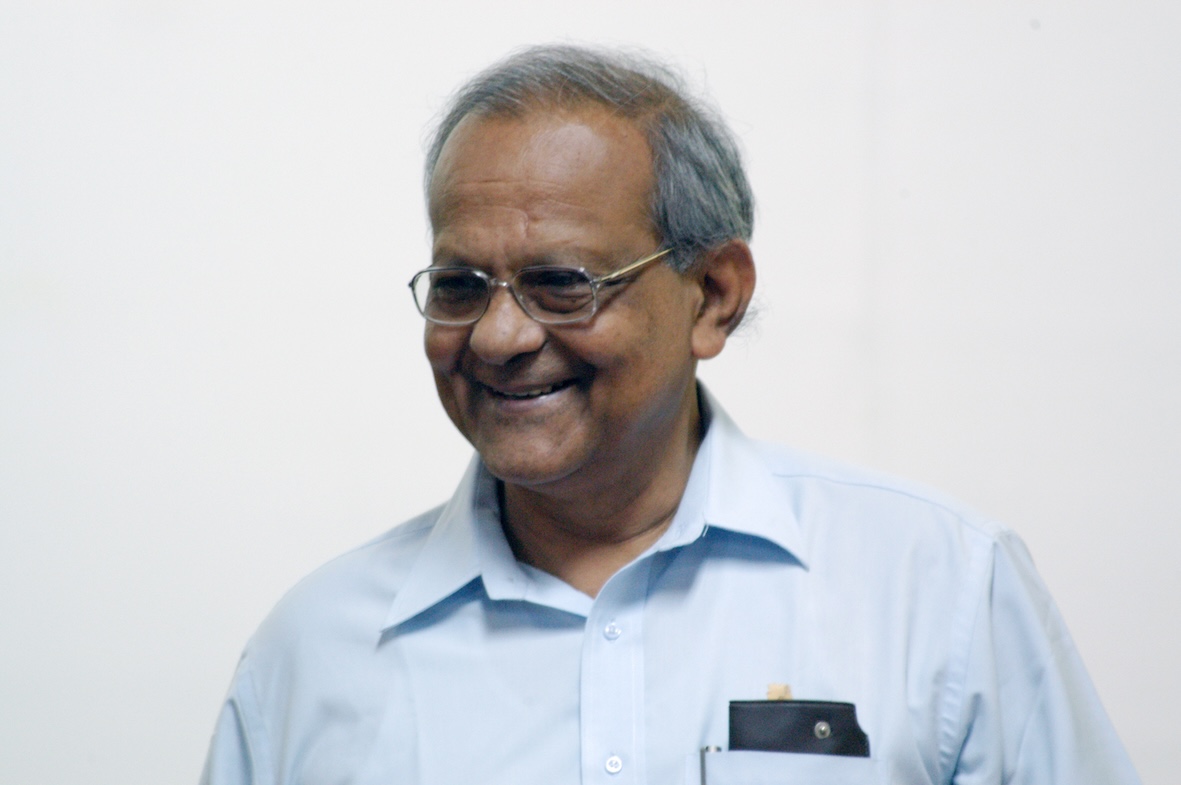
Prof. Durga Prasad Roy
Member of DTP
Research Area
Education
From 1976 to 2006
Theoretical High Energy Physics
PhD, TIFR
Prof. Durga Prasad Roy was a theoretical high energy physicist and an ex-member of the Department of Theoretical Physics (DTP) in Tata Institute of Fundamental Research (TIFR). Prof. Roy received his PhD degree in 1966 under the supervision of Prof. B.M. Udgaonkar (TIFR) in the area of particle physics. Subsequently, he took up postdoctoral positions at the University of California, Riverside (1966-67), the Theory Division of CERN, Geneva (1968-69) and then at the University of Toronto (1969-70). From 1970 to 1974, Prof. Roy worked at the Rutherford Appeleton Laboratory in the U.K, then moved back to India to join the Visva-Bharati University, at Santiniketan (1974-76). He joined TIFR in 1976 and eventually retired as a senior Professor in 2006.
Prof. Roy made several notable contributions in a wide range of topics in particle physics and astroparticle physics for more than four decades, publishing around 200 articles in topics as diverse as the strong interaction phenomenology, collider physics, supersymmetry as a candidate for beyond the Standard Model of paticle physics, etc. Some of his most notable contributions are :
-
Utilising Pomeron-Regge theory Prof. Roy predicted the existence of exotic meson (tetraquark) and baryon (pentaquark) resonances – predictions which were experimentally verified nearly 35 years later
-
Prof. Roy contributed significantly to top quark physics, pioneering the effective use of lepton isolation criteria, now widely used in hadron collider experiments to eliminate backgrounds.
-
Prof. Roy made many important contributions to the formulation of its phenomenology, including pioneering studies of missing energy signals, same-sign dileptons and other powerful measures which are routinely used today in SUSY searches by theorists and experimentalists alike.
-
Prof. Roy led a group of younger collaborators in a series of globally-acclaimed papers to analyse the solar neutrino data and identified the LMA to be the correct solution of the solar neutrino problem.
Apart from his research, Prof. Roy contributed immensely in the development of the particle physics community in India. He was also instrumental in starting an international Workshop on High Energy Physics Phenomenology (WHEPP) – a series which continues till the present day. This workshop acts as a nation-wide platform for vigorous discussion among Indian and international experts, and have provided a whole generation of young researchers around the country with their launching pad for mainstream research.
A fellow of all the three Indian Academies of Science, Prof. Roy’s scientific achievements were recognized in the form of the Meghnad Saha Award conferred by the University Grants Commission and the S.N. Bose Medal awarded by the Indian National Science Academy.
